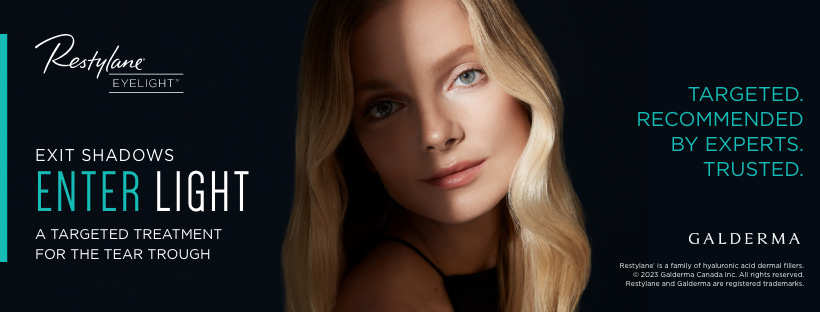Efficacy of spironolactone in treating hidradenitis suppurativa in women of childbearing age
Today’s report also covers research into the association between vulvar lichen sclerosus and celiac disease, trichloroacetic acid chemical peel as facial anti-aging, and more (1,560 words,7.5 minutes)
Hidradenitis suppurativa (HS) predominantly affects women, making it crucial to consider the impact of the condition on fertility and pregnancy when developing treatment strategies. According to a study in the International Journal of Women’s Dermatology (Oct. 2024; 10(3): p e159), current treatments include antibiotics, surgery, and biologic agents, with spironolactone showing promising results in some studies. The study evaluated the efficacy of spironolactone in treating HS in women of childbearing age. The researchers found that spironolactone effectively reduced the severity of hidradenitis suppurativa in women of childbearing age, but patients with severe disease had reduced response rates.

This retrospective cohort analysis included 157 women with HS treated with spironolactone at Michigan Medicine between 2000 and 2021. Researchers collected data on patient demographics, clinical characteristics of HS, and treatment details, including spironolactone dosage and duration. The primary outcome was improvement in HS symptoms, and secondary outcomes included the role of concomitant treatments and the influence of comorbidities such as obesity and PCOS.
Most patients had moderate to severe HS, with the armpit being the most affected area, followed by the groin, inframammary area, buttocks, thighs, and abdomen. Most patients had associated conditions, including obesity, acne, and PCOS. The median prescribed dose of spironolactone was 100 mg daily, and the median time to start spironolactone was 8.8 years after the date of HS diagnosis. Patients were divided into two groups: those who experienced improvement in spironolactone and those who did not.
The analysis revealed that 20% of participants experienced improvement in HS symptoms with spironolactone therapy. Factors associated with improvement included shorter time from diagnosis to spironolactone initiation and milder disease severity. Conversely, patients with more severe disease were less likely to show improvement. Patients who had previously failed other treatments or were on higher doses of spironolactone did not experience significant improvements.
The study also examined the role of comorbidities and concurrent therapies in treatment outcomes. The authors note that patients who were obese or had a history of acne showed a higher propensity for specific disease patterns. Still, the conditions did not significantly impact spironolactone’s effectiveness. The use of biologic therapies and concomitant treatments such as topical steroids or antibiotics was more common in patients with severe disease. Still, these factors did not correlate with more significant improvement from spironolactone.
The Takeaway: The study suggests that spironolactone may be effective for treating mild cases of HS. Early intervention with spironolactone may offer benefit, but its efficacy diminishes in more severe, long-standing cases. Comorbidities such as obesity or acne are common but the conditions do not impact spironolactone’s effectiveness.
From the literature on women in dermatology
Trichloroacetic acid chemical peel as facial anti-aging therapy for postmenopausal women
A clinical trial published in Advances in Dermatology and Allergology evaluated a new trichloroacetic acid (TCA) peel as an anti-aging treatment for postmenopausal women. The researchers found the TCA chemical peel significantly improved skin hydration in postmenopausal women but did not enhance skin elasticity. Participants reported feeling satisfied with the treatment’s results.
For this randomized, double-blind clinical trial, 46 participants were assigned to either an experimental group, which received a 10% TCA peel, or a control group, which was given a placebo solution. Treatments were applied weekly over four weeks. The researchers conducted assessments of skin hydration, elasticity, and wrinkle severity pre- and post-intervention and at one and three months post-treatment. The results showed significant improvements in skin hydration and participant satisfaction in the TCA group compared to control.
Impact of psoriasis on pregnancy desire and possible consequences on fertility
A study published in Dermatology Practical and Conceptual examined reproductive health in female psoriasis patients, focusing on how the condition—particularly genital psoriasis—affects pregnancy desire and outcomes. The researchers found that female psoriasis patients had lower-than-average pregnancy rates, with a high miscarriage rate, especially among those with psoriatic arthritis.
For this retrospective observational study, the authors included adult female patients diagnosed with psoriasis during or before childbearing age. Participants were asked about their fertility and past pregnancies to assess the relationship between their reproductive health and psoriasis. Among 100 participants, 73 reported a history of pregnancy, for a total of 170 pregnancies. The average number of pregnancies to term and the average number of children per woman were below the U.S. national average. The percentage of miscarriages was 18.2%, which is higher than the national average. The miscarriage percentage rises to 27.4% in patients with psoriatic arthritis. During pregnancy, psoriasis symptoms generally remained stable or improved despite 91.5% of participants not following any treatment.
Association between vulvar lichen sclerosus and celiac disease in woman
A study in Ginekologia Polska assessed the link between vulvar lichen sclerosus (VLS) and celiac disease in adult women. The researchers found no significant association between VLS and celiac disease or dermatitis herpetiformis, the cutaneous manifestation of celiac disease.
For this study, the authors tested 50 women with VLS and 41 healthy women for celiac disease-specific antibodies. The results showed no significant antibody differences between the groups, suggesting no clear association between VLS and celiac disease. However, the researchers noted the study’s small sample size as a limitation and recommended further research to explore potential links between the two conditions.
Characterizing clinical and hormonal profiles of acne in North African women with polycystic ovary syndrome
A study published in the Archives of Dermatological Research examined the prevalence and clinical characteristics of polycystic ovary syndrome (PCOS) in acne patients. The researchers found that women with acne and PCOS had more severe acne, higher rates of hirsutism and androgenic alopecia, and elevated testosterone levels compared to those with isolated acne.
This prospective study included 212 patients diagnosed with acne at Farhat Hached University Hospital in Tunisia, and 65% of the study’s participants also had PCOS. The patients were then divided into two groups: those with confirmed PCOS and those with isolated acne. All patients underwent hormonal assessment and ovarian ultrasound. The results showed that the PCOS group had more nodular acne and a higher prevalence of hirsutism and androgenic alopecia than those with isolated acne. PCOS patients also showed higher testosterone levels and elevated luteinizing hormone/follicle-stimulating hormone ratios. Additionally, acne severity was linked to high testosterone and abnormally high levels of prolactin.
VIDEO: Women's Dermatologic Society - Indian WDS Session at EADV - Rose Parade of Cases
The Women’s Dermatologic Society presented the Indian Women’s Dermatologic Society session at the European Academy of Dermatology and Venereology congress, which was held in Amsterdam in September 2024.
A case of acral extragenital lichen sclerosus and its dermoscopic finding
A case study in Cureus described a 65-year-old woman with a six-month history of mildly itchy yellowish-white papules and patches with small, pore-like openings and slight swelling on the inner wrists and front ankles. She believed the lesions to be allergic reactions. The initial differential diagnoses included morphea, acrokeratosis verruciformis of Hopf, lichen planus, and extragenital lichen sclerosus (LS). The dermoscopic evaluation revealed white, structureless areas with pore-like openings. An incisional biopsy was performed, and the results confirmed extragenital LS, revealing thickened skin, blocked follicles, and an inflammatory layer with dense collagen in the upper dermis. The patient was treated with clobetasol 0.05% cream twice daily for four weeks. This led to significant improvement, with no recurrence at an eight-month follow-up.
Coming Up in Women in Derm
Nov. 14-17 → Dermatology Update (Montreal)
This month:
November is Eczema Awareness Month
November is Crohn’s and Colitis Awareness Month
November is Diabetes Awareness Month
November is Indigenous Disability Awareness Month
November is National Domestic Violence Awareness Month
Nov. 10 to 16 is National Nurse Practitioner Week
Nov. 14 is World Diabetes Day
Nov. 25 is International Day for the Elimination of Violence Against Women
Something to think about
“While some foundations include SPF, it's best to apply a separate sunscreen beforehand. Most people don't use enough foundation to ensure adequate sun protection, so layering with a dedicated SPF is more effective.”
— Dr. Michelle Henry, a New York-based dermatologist, providing advice to patients in an interview with Good Morning America.





